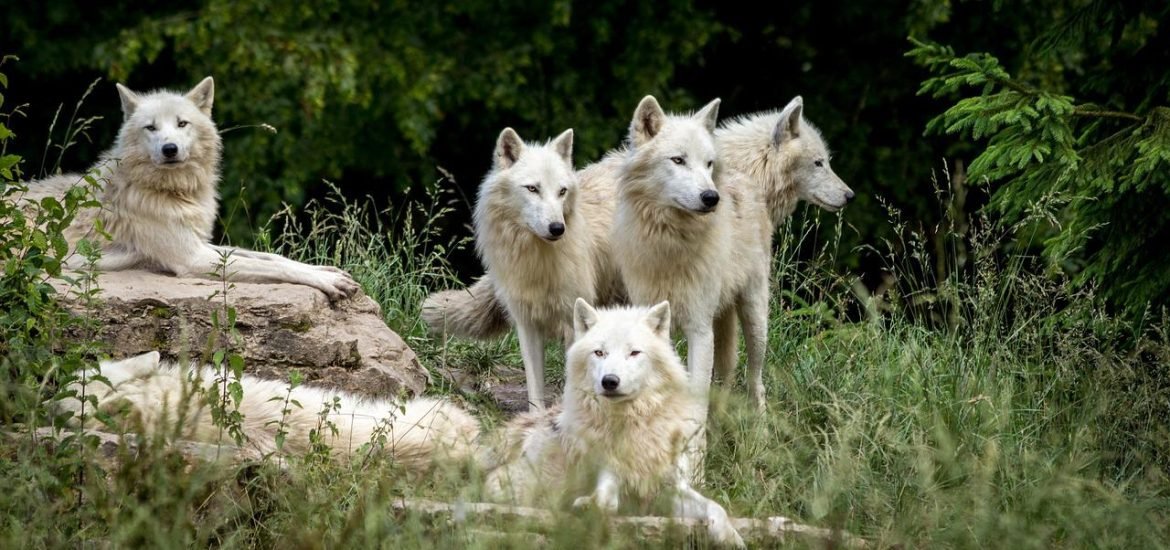
Dogs can be traced back to at least two different populations of ancient wolves, according to a study published in Nature. The authors, based at the Francis Crick Institute, UK, believe this can move us closer to uncovering the mystery of how dogs were initially domesticated.
Researchers believe dogs originated from the gray wolf and were domesticated around 15,000 years ago during the Ice Age. However, where exactly this happened and if it occurred in a single or multiple locations is still unknown. Several studies compared the DNA of dogs and modern wolves but found no answers.
Now, a team of international researchers led by a group from the Francis Crick Institute in London turned to ancient wolf genomes to try to understand how dogs evolved from these animals. The analysed 72 wild genomes covering the last 100,000 years and coming from North America, Siberia, and Europe. Thirty-eight institutions from 16 different countries contributed samples for this study, including the remains of a complete and perfectly preserved de Siberian wolf who lived about 32,000 years ago. For the analysis, nine DNA labs collaborated to generate DNA sequence data from the wolf samples.
From the results, the team found that both early and modern dogs are closer to ancient wolves in Asia than those living in Europe, indicating domestication somewhere in the east. However, they also found evidence of two separate populations contributing DNA to modern dogs. Early dogs from northern Europe, America, and Siberia seem to have a single origin coming from an eastern source. Early dogs from the Middle East, Africa, and Southern Europe have ancestry from another source related to wolves in the Middle East, in addition to the source from the east.
One possibility is that dogs underwent domestication more than once, with the different populations mixing at some point. A second suggestion is that domestication only happened once, and the dual ancestry occurred when early dogs mixed with wild wolves. It’s impossible to see which option is more likely from DNA results.
“Through this project, we have greatly increased the number of sequenced ancient wolf genomes, allowing us to create a detailed picture of wolf ancestry over time, including around the time of dog origins,” said Anders Bergström, co-first author and post-doctoral researcher in the Ancient Genomics lab at the Crick. “By trying to place the dog piece into this picture, we found that dogs derive ancestry from at least two separate wolf populations – an eastern source that contributed to all dogs and a separate more westerly source that contributed to some dogs.”
Using the 72 genomes, the authors also built a timeline of how wolf DNA changed over time, tracing back natural selection. For example, over 10,000 years, one gene variant went from rare to being present in every animal, and it’s still present in wolves and dogs today. It’s possible that the gene, which is involved in shaping the bones in the skull and jaw, may have spread due to changes in the type of prey available during the Ice Age, giving a particular advantage to wolves with a specific head shape.
“This is the first time scientists have directly tracked natural selection in a large animal over a time-scale of 100,000 years, seeing evolution play out in real-time rather than trying to reconstruct it from DNA today,” said Pontus Skoglund, senior author and group leader of the Ancient Genomics lab at the Crick. “We found several cases where mutations spread to the whole wolf species, which was possible because the species was highly connected over large distances. This connectivity is perhaps a reason why wolves managed to survive the Ice Age while many other large carnivores vanished. Similar whole-genome time series from the Ice Age, in humans or other animals, could provide new information about how evolution happens.”
Bergström, A. et al. (2022). Grey wolf genomic history reveals a dual ancestry of dogs. Nature. DOI 10.1038/s41586-022-04824-9.